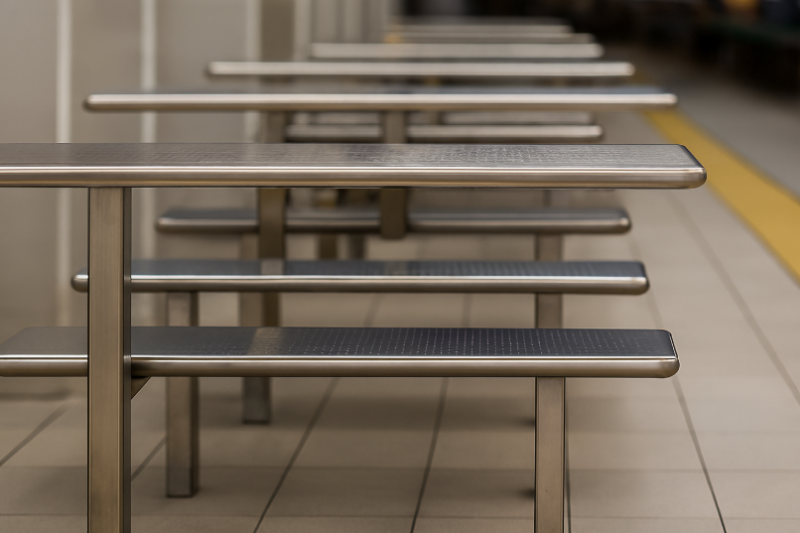Stainless Steel vs Carbon Steel: Key Differences & Uses
Building in Singapore means heat, humidity, and the occasional sea breeze testing every surface. When you weigh stainless steel vs carbon steel, the right choice can cut maintenance, keep projects on schedule, and protect your budget. This guide shows you how each metal performs in our climate, where it shines in kitchens, façades, and industrial sites, and when a higher upfront cost pays off over time.
What is Stainless Steel?
Stainless steel is an iron alloy with at least 10.5 percent chromium. The chromium reacts with oxygen and forms a thin passive film that protects the surface from rust. Because the film repairs itself, stainless steel resists corrosion even after light scratches. Grades like 304 and 316 appear most often in building and F&B projects. 316 adds molybdenum, which improves resistance to chlorides near the sea.
Key Properties
- Corrosion resistance: 316/316L handles sea spray and cleaning chemicals better than 304. Use 316 for Sentosa, Tuas, Jurong Port, or rooftop coastal zones.
- Hygiene & cleanability: Non-porous surface. You can sanitise often without paint chipping or flaking.
- Strength & fabrication: Good weldability and formability; control heat and use clean tooling to avoid discolouration.
- Finishes that fit the brief: 2B (matte), No.4 (brushed), bead-blast, and mirror. Correct finish reduces tea-staining in coastal air.
- Lifecycle value: Higher capex, lower upkeep when exposure is harsh or access for repainting is difficult.
- Sustainability: High recycled content and 100% recyclability support Green Mark goals.
Where Stainless Steel Fits in Singapore
- Commercial kitchens & food processing — benches, shelves, splashbacks, sinks
- Marine & coastal fittings — railings, bollards, ladders, cleats
- Façades & handrails — public walkways, malls, transport hubs
- Healthcare & labs — trolleys, benches, clean-room fixtures
Need components cut and ready? We offer stainless steel CNC machining plus deburring and passivation, suited for kitchens, façades, and coastal fittings.
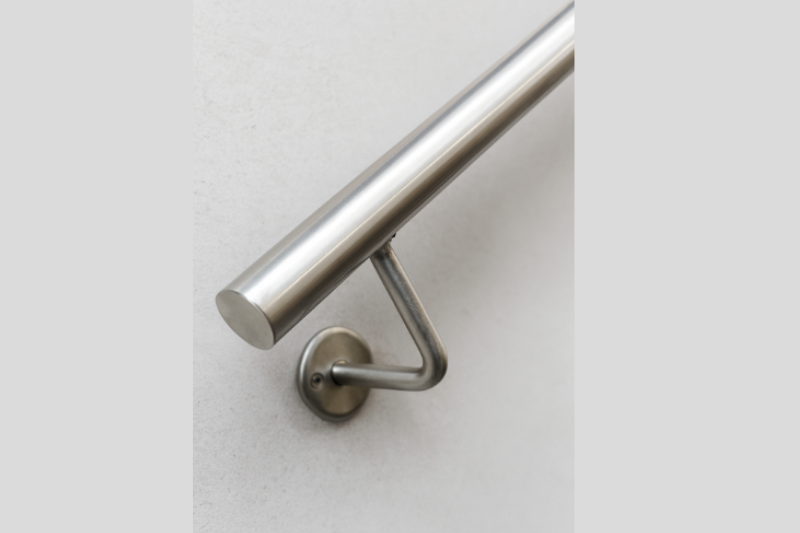
What is Carbon Steel?
Carbon steel is iron with carbon as the main strengthening element. As carbon increases, the steel becomes stronger and harder but less ductile and a bit trickier to weld. Most construction and fabrication work in Singapore uses low carbon or mild steel because it forms easily, welds cleanly, and keeps costs in check.
Core Properties
- Strength: Higher carbon raises tensile strength and wear resistance
- Formability: Low carbon grades bend and punch well for brackets and frames
- Weldability: Mild steel welds with standard procedures and common filler wires
- Coatings: Uncoated carbon steel will rust in Singapore’s humidity, so plan for paint, powder coat, or galvanising
Typical Carbon Ranges
- Low carbon (mild) steel: about 0.05 to 0.30 percent carbon
- Medium carbon steel: about 0.30 to 0.60 percent carbon
- High carbon steel: about 0.60 to 1.0 percent carbon
Where Carbon Steel Fits in Singapore
- Industrial structures: beams, columns, mezzanine floors in Tuas and Jurong
- Fabricated parts: machinery bases, frames, guards, and handrail posts
- Value builds: large tonnage projects that need strength at a lower upfront cost
- Coated components: parts that will be painted, powder coated, or hot dip galvanised
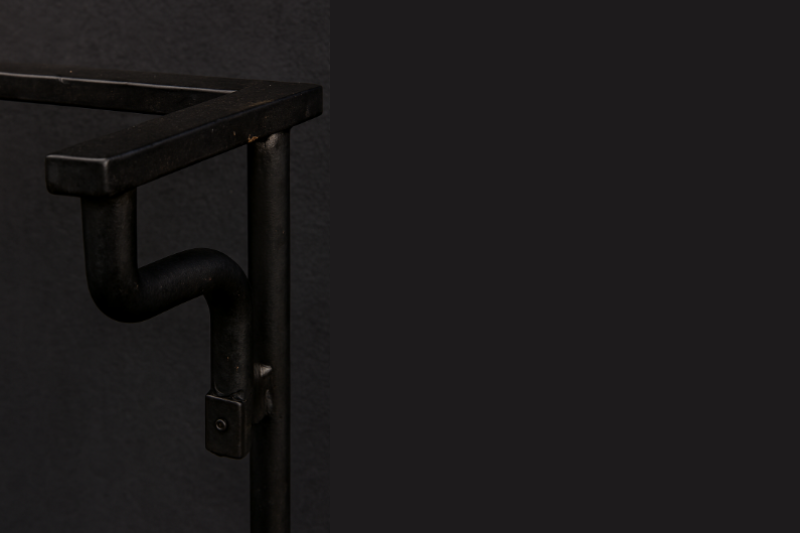
Stainless Steel vs Carbon Steel
If you compare stainless steel vs carbon steel, carbon steel usually wins on initial price and heavy structural strength.
Stainless steel wins where corrosion, hygiene, or appearance drive the specification. For coastal or food environments, stainless often delivers a lower total cost over time. For interior frames and accessible areas, coated carbon steel offers strong performance at a lower capex.
1) Corrosion Resistance
Stainless steel resists rust because its chromium forms a self-healing passive film. It keeps its finish in Singapore’s heat, humidity, and coastal chloride exposure. Carbon steel corrodes without protection. You must paint, powder coat, or hot-dip galvanise it and plan periodic touch-ups.
For Sentosa boardwalk railings, specify 316 stainless. For an indoor warehouse frame in Jurong, coated carbon steel works.
2) Strength and Weight
Carbon steel delivers high strength at a lower cost per kilo. It suits heavy structures and large tonnage projects. Stainless steel offers comparable strength in many grades but at a higher material price; you choose it when corrosion or hygiene dominates.
When weight matters, optimise section sizes first. Do not jump to stainless purely for strength.
3) Fabrication and Weldability
Carbon steel cuts, bends, drills, and welds with standard procedures and common filler wires. Stainless steel also fabricates well, but you must control heat, purge during welding where needed, and use clean tooling to prevent contamination and discolouration. Post-weld passivation restores corrosion resistance.
4) Magnetism
Most austenitic stainless grades (304, 316) are non-magnetic or only weakly magnetic. Ferritic and martensitic stainless are magnetic. Carbon steel is magnetic. If you design for magnetic sensors or catches, confirm the stainless family before you commit.
5) Finish and Hygiene
Stainless steel keeps a clean, architectural surface and tolerates frequent sanitising. It suits kitchens, hospitals, and public touchpoints. Carbon steel takes paint or powder coat well, but coatings can chip and need repair.
For example, hawker centre benches and splashbacks use 304 stainless with a No.4 brushed finish for easy cleaning.
6) Cost and Lifecycle
Carbon steel wins on upfront price. Stainless steel can win on total cost of ownership where corrosion is severe, access is difficult, or downtime is costly. Add the maintenance schedule to your budget model before you choose.
If you need scaffolds or shutdowns to repaint, stainless often pays back.
7) Availability and Lead Time
Local suppliers stock mild steel sections widely. Stainless sheet, tube, and plate are also common, with 304 and 316 the usual grades. Special finishes or thick plates may require lead time; plan early for façade packages.
8) Sustainability
Both materials are recyclable. Stainless often contains high recycled content and lasts longer in harsh environments, which can reduce replacements. For Green Mark submissions, include recycled content declarations and maintenance intervals.
9) Safety and Compliance
Stainless eliminates flaking paint in food zones. Carbon steel remains safe when you keep coatings intact and use compliant paint systems for the environment class. Always request material test certificates and finish codes in your purchase orders.
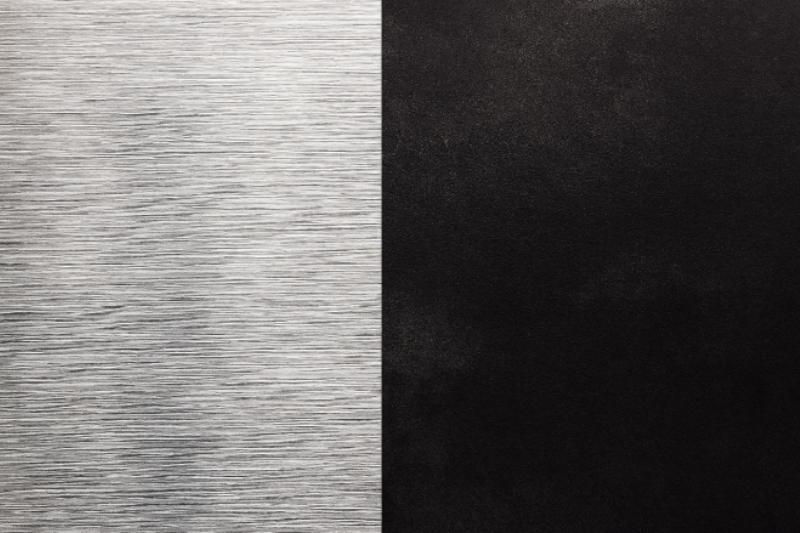
Which Steel Should You Use?
Use stainless steel (304 indoors, 316 near the sea) when corrosion resistance, hygiene, or a premium finish matter, typical for kitchens, façades, and coastal railings in Singapore. Choose carbon steel for large, indoor structures where you can paint/galvanise and maintain coatings, ideal for frames, mezzanines, and machinery bases.
| Situation | Pick | Why |
|---|---|---|
| Boardwalk or marina railings | 316 stainless | Resists pitting/tea-staining; low upkeep |
| Hawker benches & splashbacks | 304 stainless | Cleans/sanitises without flaking paint |
| Warehouse mezzanine & bases | Carbon steel (coated) | Lowest upfront for heavy tonnage |
| Indoor handrails, malls | 304 stainless | Durable finish, easy cleaning |
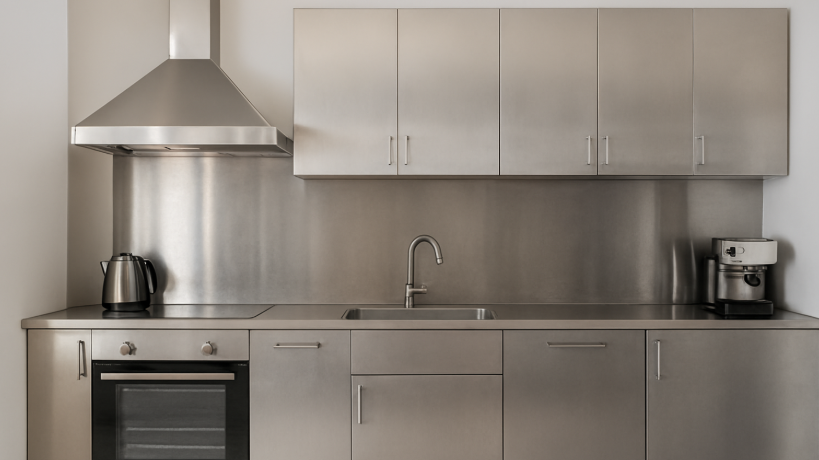
Conclusion
Choosing between stainless steel and carbon steel depends on your site, exposure, and upkeep plan. If you’d like a second pair of eyes, The Monster Builder can review your drawings and suggest a practical spec for Singapore conditions.
Have a plan already? Great. If you want a quick check on grade or finish before you order, send us your spec and we’ll confirm it aligns with Singapore’s environment classes. Contact us now!

